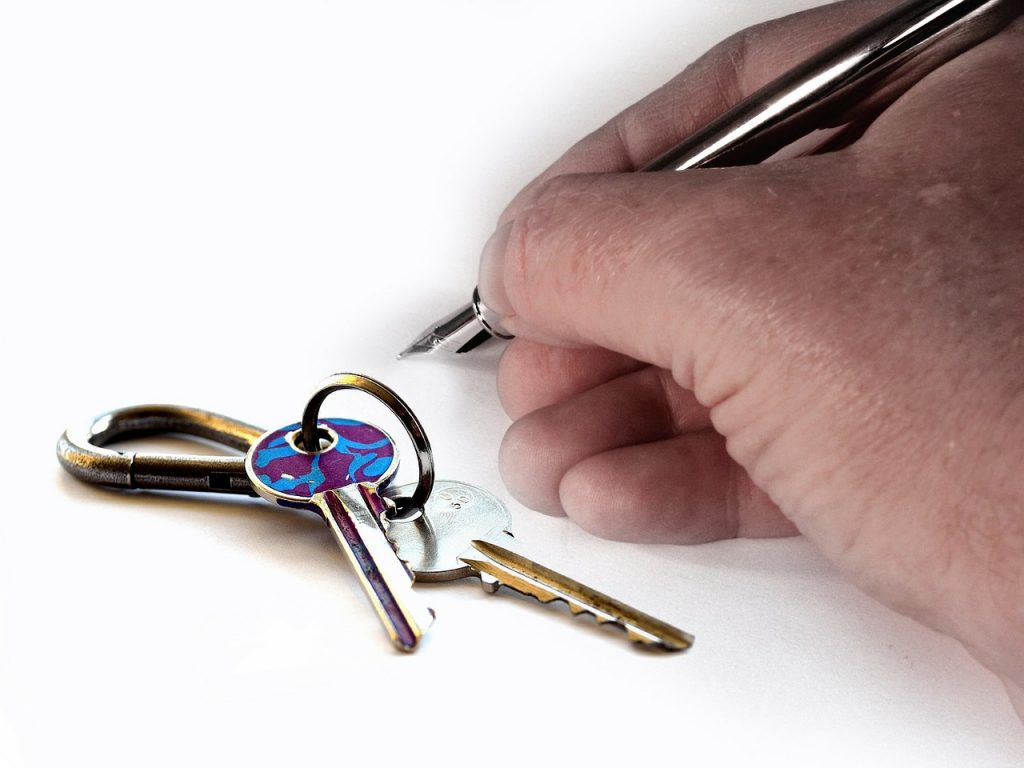By your best estimate, it’s the third time this month that the tenant in Unit 3 has called you up in the middle of dinner to ask if you could let them in. You take a deep breath, excuse yourself from the table, and go handle the crisis.
Everyone has that one tenant who seems particularly forgetful. Whether it’s misplacing their keys or locking themselves out altogether, it’s important to have a solid plan in place so you’re able to make sure that this stops happening. So what do you do?
Consider a code-protected dropbox
Chances are, you’ve probably seen one of these in the wild before. These dropboxes tend to vary in size and, more often than not, have a keypad on the front. That way, any authorized user who has the code to the dropbox can access its contents.
Naturally, you wouldn’t want to spare backups of every tenant’s keys in one of these. But if you opted for the smaller models and had individual ones dedicated to each unit in your building, it would be a sensible alternative that could help stem the tide of SOS calls flooding your phone.
You could even take this a step further and go for keyless entry into the units. There are plenty of door options that either rely on key fobs or codes. Of course, this would be quite the financial investment, but it would be a great way to maintain security without handling an ever-revolving backlog of tenant keys.
If you do choose to go this route though, you need to keep in mind that after each tenant moves out, you’ll need to change the code. Luckily, most modern systems make this a fairly simple process that shouldn’t eat up too much of your time and energy.
Invest in landlord software
For the most part, getting landlord software is more for your benefit than the tenant’s. Companies like Turbo Tenant offer landlord software to property managers in an effort to help them more effectively manage their units. This means that, through the software, you can handle anything from the initial screening and leasing process to tenant requests and maintenance issues.
When it comes to recurring lockouts, you could even flag a tenant’s account and keep track of the frequency of the problem. Depending on the lease you’ve put forth, you could add a clause stating that “X amount of lockouts will result in an added fee on top of monthly rent.” It’s a fair and effective way to reimburse you from the time you’ve spent making new copies of keys and letting tenants into your building.
Plus, it does have some tenant-facing benefits too. If you’re running a multi-unit building, then you might be employing a front desk agent or concierge service. That means, before letting any tenants into the building, you need to verify their lease and reference it against a form of personal identification.
With landlord software, this is a snap. You can pull up the lease and acquire the pertinent information within minutes. On an older model, you may be stuck sifting through poorly organized computer files or digging through an overflowing filing cabinet to find the right papers.
A better system
No matter how you choose to approach the issue, it’s important to have a plan in place when it comes to sometimes problematic tenants. Whether you’re investing in new hardware or software or simply adding penalties for continued lockouts, it’s important to be proactive in the management of your tenants. As long as you’re taking the right steps, you’re creating a better landlord experience for yourself.





